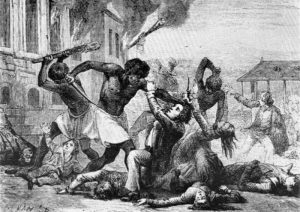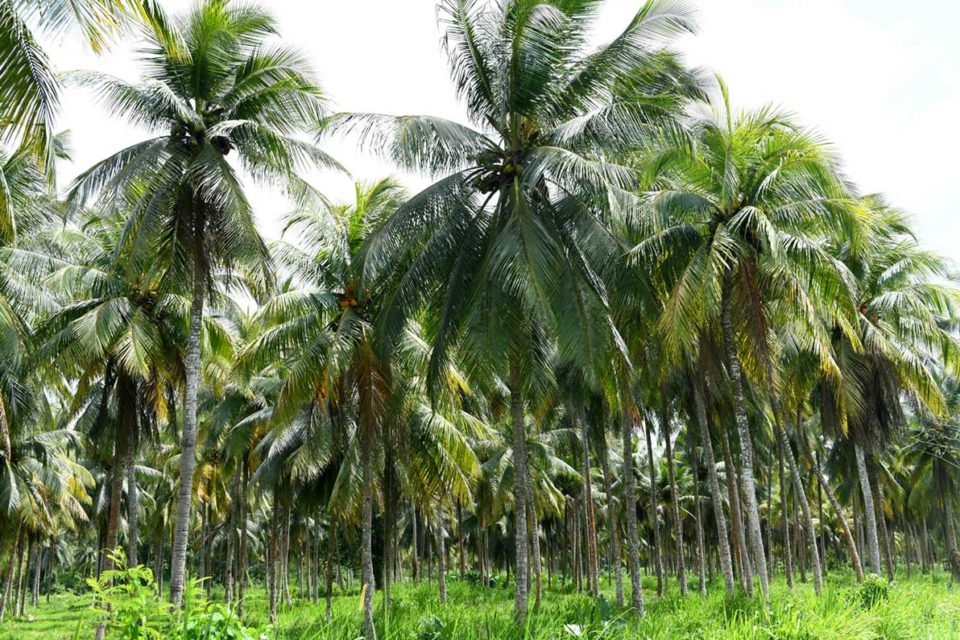“ We likkle but we Tallawah” is what most parishioners would say in describing St. Mary, for although it is Jamaica’s 5th smallest parish of only 240 square miles and a population of around 120,000, it has played a big part in the country’s history and development.
To begin with, it was one of the earliest areas to be settled by the Spanish and its capital Port Maria was in fact the second town to be created after Sevilla de la Nueva in neighbouring St. Ann. More significant however, is that Rio Nuevo in the parish is the site of the most important battle fought in Jamaica where Rio Nuevo enters the sea. Here the English decisively beat off the Spanish in their bid to recapture Jamaica. In that decisive battle of 1658, the English under Governor D’Oyley killed 300 Spaniards and took over 100 prisoners and ensured that Jamaica remained a British colony for the ensuing 300 years.
Welcome to St. Mary!
Over the ensuing centuries, events originating in St Mary which affected the direction of the country might not have been many, but such as there were, those events were always monumental and significant. Noteworthy among these was Tacky’s War. There is no issue among historians whether this event was a ‘rebellion’ or an ‘uprising’ . On Easter Monday 1760, an enslaved man, Takyi, from the Ga ethnic group in Accra, Ghana, who is reputed to have been a Chief, gathered a small group of enslaved people on the Frontier estate as well as from neighbouring plantations and proceeded to murder their enslavers before marching to Port Maria. His right-hand man was Chief Jamaica.There they attacked Fort Haldane, killing the guards and taking several barrels of gunpowder and firearms. Their numbers mushroomed into hundreds as they were joined by other enslaved people as well and for a month engaged the local militia as they systematically carried out their anti-slavery project, burning, killing and looting. They were eventually overwhelmed when reinforcements including the Maroons were brought in. There are conflicting reports about the fate of Chief Takyi. Oral history in St Mary indicates that he escaped behind what is now called “Tacky Falls”; the British account is that he was shot by a maroon, turned in, beheaded and his head placed on a poll in Spanish Town as a warning to others who planned to follow his footsteps. Accounts also indicates that many of his followers committed suicide rather than be re-captured. In all some 300 of the enslaved were killed, 50 executed, and another 500 shipped out of the island, reportedly to Honduras and parts of the US South. The white casualty, though not as great, numbered 60 dead, the largest single number of any protest movement in Jamaica including the Morant Bay War almost 100 years later.
The significance of this anti-slavery war led by Chief Takyi is that it represented the most direct challenge ever mounted against the slave system by the enslaved. Some people see it as evidence of the beginning of a strong tradition of resistance to slavery and oppression in St Mary that was later reinforced during the labour protests of 1938 when four persons were killed at Islington in the parish.

How did the parish of St. Mary get its name? One account says it was named after Puerto Santa Maria by the Spanish but it is more likely that it was named after Mary the daughter of Sir Thomas Modyford who was Governor at the time. No such speculation surrounds the origins of the name Port Maria its capital. It was the English who changed Puerto Santa Maria to its present day Port Maria, a beautiful coastal town with a rich history and the town with the greatest number of monuments, historical sites and ruins. Indeed locals argue that the importance of Port Maria has been understated by historians. They claim for example, that it was here and not Discovery Bay that Columbus and the Europeans first invaded with Jamaica. Local interests also remind us that long before there was an airport and big business in Kingston, Port Maria was the hub of commercial activities in Jamaica as a port from the 1800s to the 1940s for the export first of sugar, and later of bananas and citrus before it was destroyed by a series of hurricanes. In recent years, the town has suffered from severe flooding during periods of rainfall which tend to be heavy and continuous.
Geographically the parish of St Mary is quite mountainous although it has no significant mountain ranges to speak of. What it does have are three significant rivers, Rio Nuevo, Wag Water and White River. The White River has the distinction of being the only one in the island developed for white river rafting and an attractive park area. The Wag Water which flows from the hills of St Andrew across the entire length of the parish entering the sea at Annatto Bay also runs through Castleton Garden close to the border with St. Andrew.
Oracabessa in the parish was another important banana loading port. Its name is derived from the Spanish ora cabeza (golden head) and made popular by Englishman Ian Fleming who built his home Golden Eye there and from where he wrote the 13 James Bond thrillers. Says Fleming:
I sat down at the red bullet-wood desk where I am now typing this, and, for better , wrote the first 12 best-selling thrillers that have sold around 20 million copies and have ben translated into 23 languages. I wrote every one of them at this desk with the jalousies closed around me so that I would not be distracted by the birds and the flowers and the sunshine outside until I had completed my daily stint. ( I have interrupted my sticky 13th to write these words.) The books feature a man called James Bond.
Golden Eye survives today, remodeled into a luxury resort by Chris Blackwell as part of his Island Outpost operations while Ian Fleming is memorialized not only in his Bond novels and thriller films but by the naming of Jamaica’s third international airport after him, the Ian Fleming International Airport located at Boscobel.
Fleming was not the only famous visitor/resident who made St Mary his home . An early resident was none other than legendary pirate and Lieutenant Governor of Jamaica Sir Henry Morgan who owned several properties in and around Port maria including Llandrumny named after the place in Ireland where he was born. The ‘Look Out’ located beside Fort Haldene offered a commanding view of the harbour and provided him with a vantage point for easy escape. Many years later, Morgan’s home was bought by the famous English playwright Noel Coward who renamed it ‘Fireflies’. Today it is operated as a heritage site open to the public.
Agriculture remains the main source of employment in St Mary which at one time boasted dozens of sugar estates and factories. Once sugar declined, St Mary became, along with neighbouring Portland, a boom parish for banana cultivation and export giving life to its ports at Port Maria, Oracabessa and Annatto Bay. St Mary Banana Estates, operated by the Jamaica Producers Group was established in 1986 and is the largest banana estate in Jamaica. In addition to exporting bananas the company’s focus has shifted to processing notably banana chips under its ‘St Mary’s ‘ label. More recently the operations have been diversified to include the growing of pineapples for export and for local consumption. Although agriculture is the dominant crop, St Mary is by no means a mono-crop parish producing a variety of crops including citrus, coconuts and a range of coconut-related products like oil and copra.
Tourism came early to St Mary but has been slow in developing and again like Portland has not attracted the mass tourism of either the local or international brands. One of the first properties to be developed was the Tower Isle Hotel which was opened in 1949 and is now owned by the Issa family and operated as ‘Couples’.
There are a number of small properties that are dotted along the coast from Harmony Hall to Oracabessa but mass tourism is yet to make its way to the parish which some say is not such a bad thing.
DID YOU KNOW?
- The Cabaritta Island at Port Maria has one of the longest beaches in the island.
- Paggee Beach is host to the country’s longest running fisherman’s regatta competition.
- Palmers Park was once reputed to be the one of the best cricket pitches in the world.
- Mary is the birthplace of prize-winning author, Erna Brodber who was born and still has her home at Woodside.
- Actor and comedian Oliver Samuels, Harmony Hall; Chris Blackwell ; public historian and university professor Verene Shepherd and artistes Capleton, Marion Hall (Lady Saw) Sizzla and Tanya Stephens”
What are your Views?
There is a view circulating in St Mary that certain interests used money from the banana industry in St Mary to develop tourism in Montego Bay. Is there any truth to this?
PLEASE LEAVE YOUR COMMENTS BELOW


